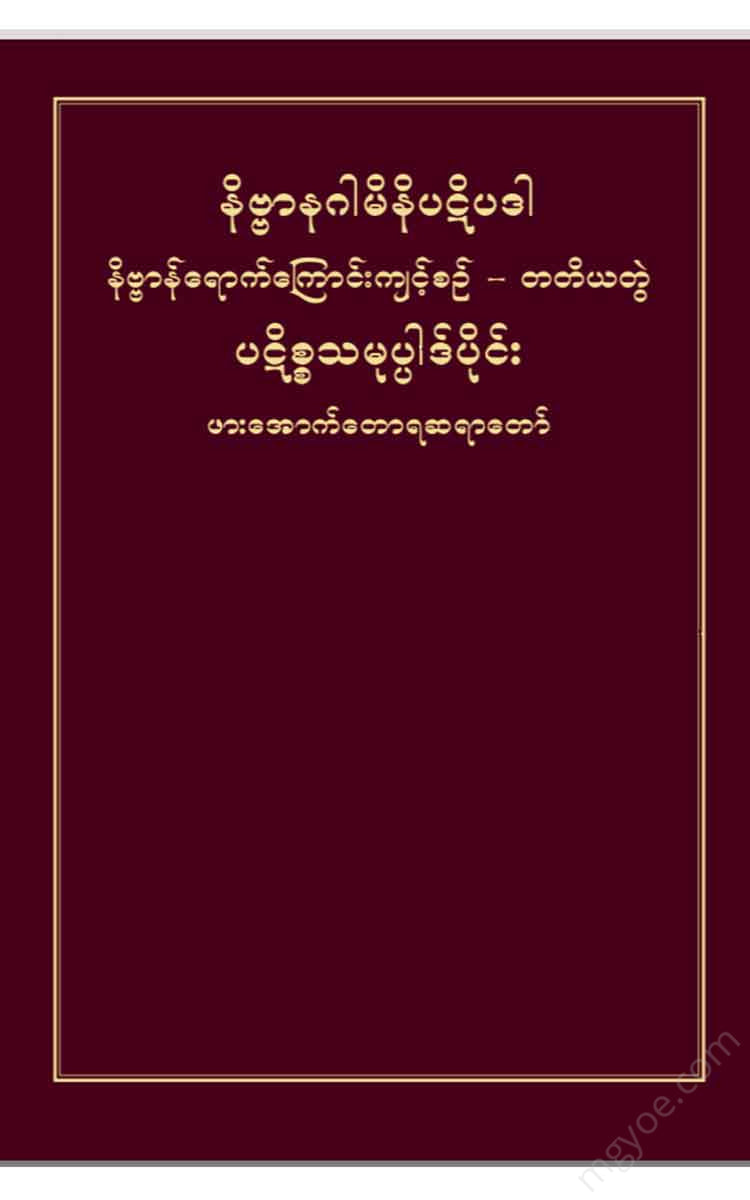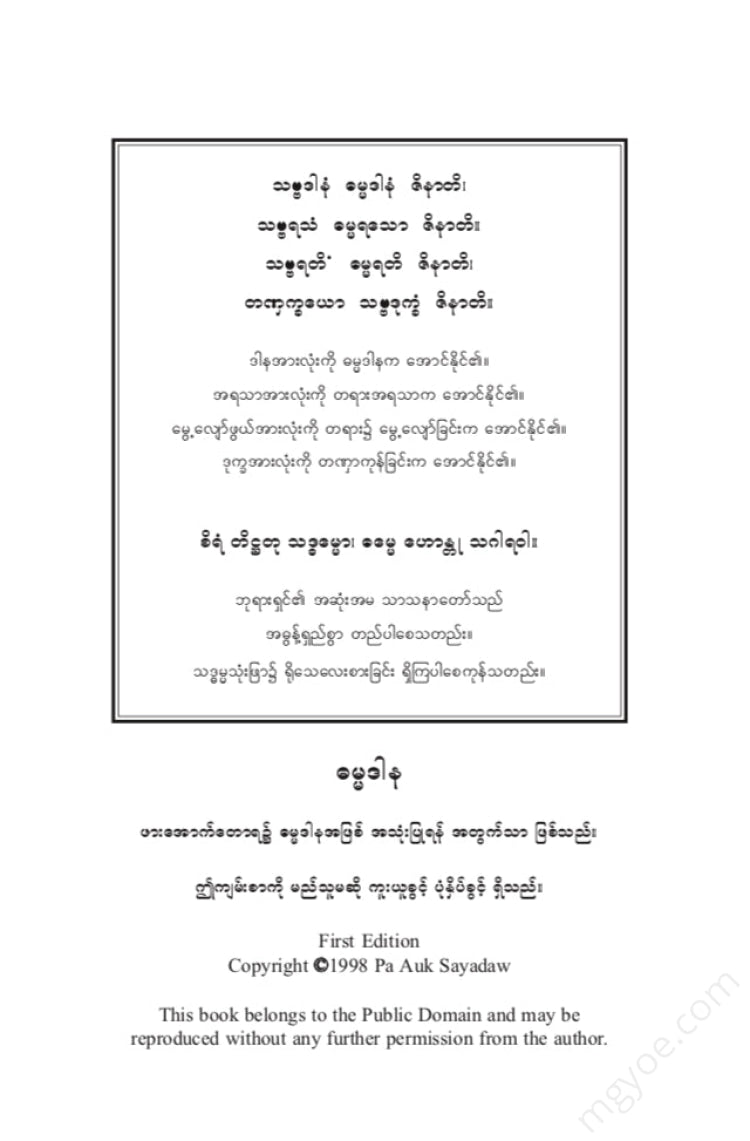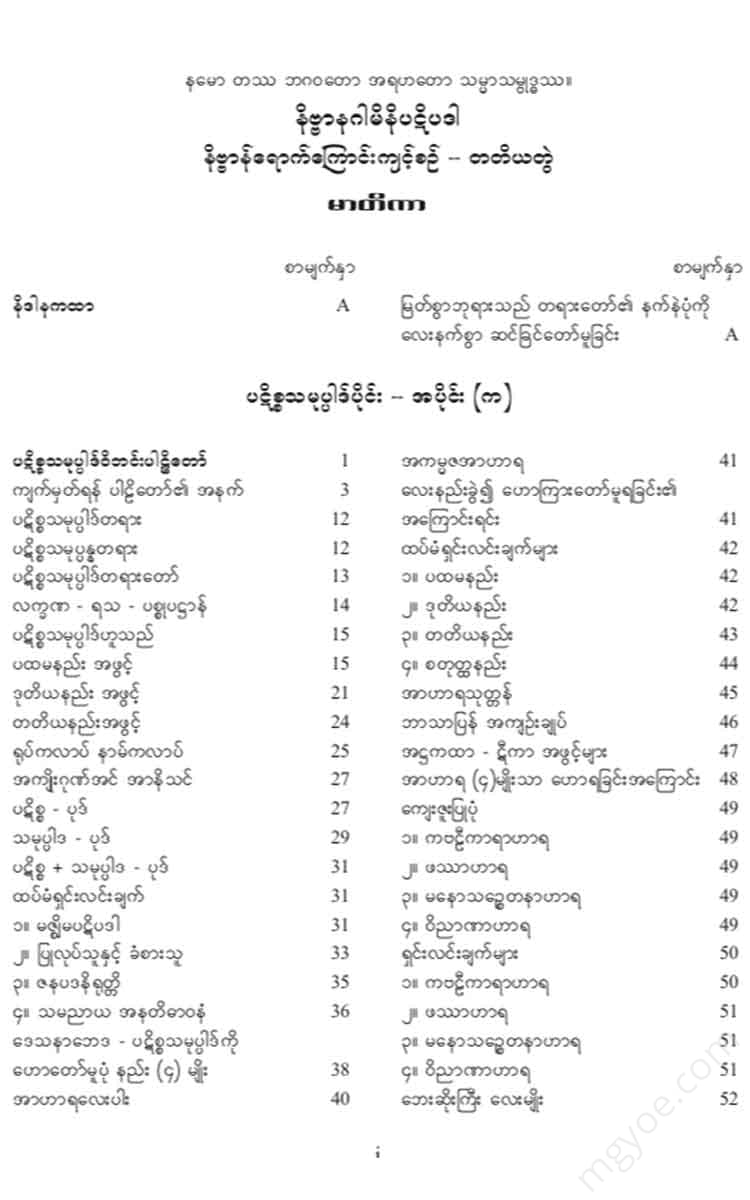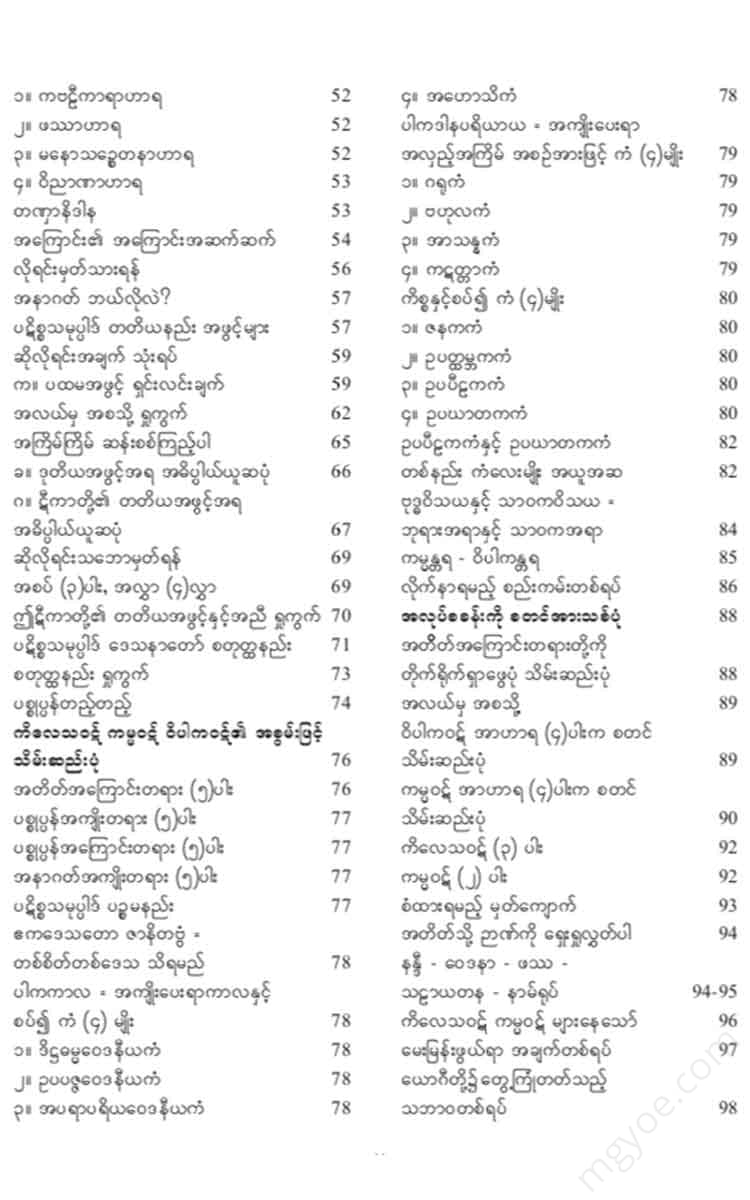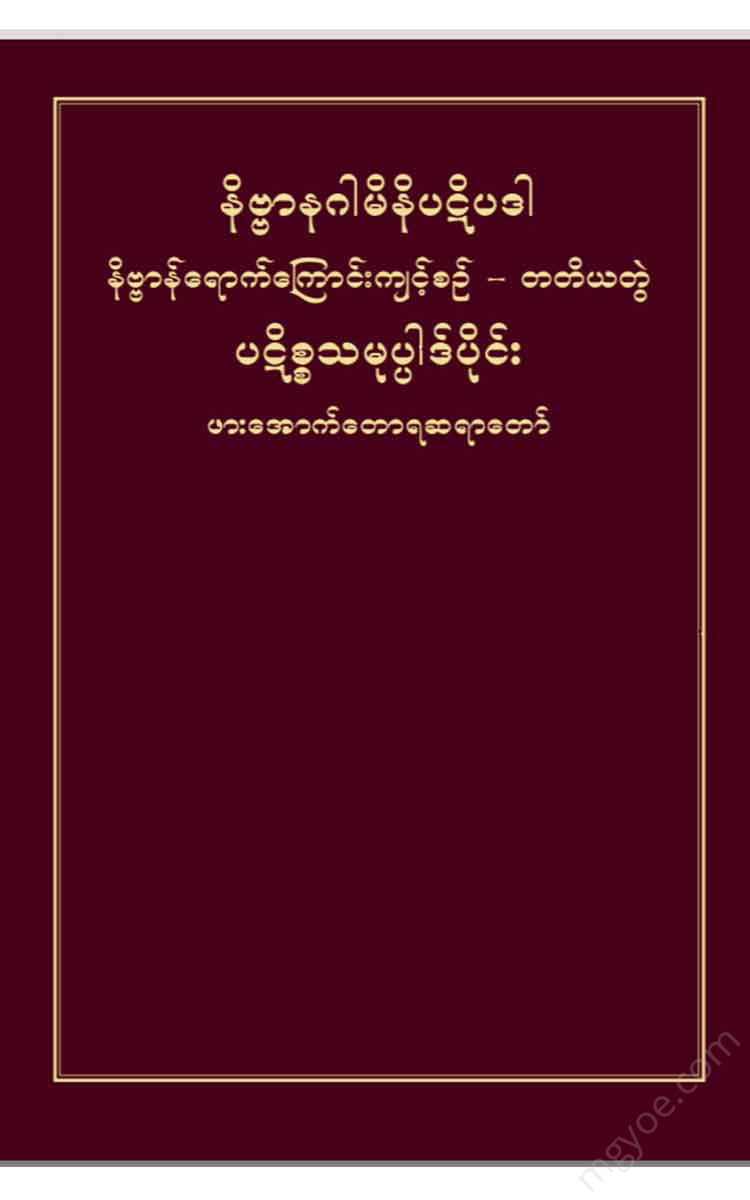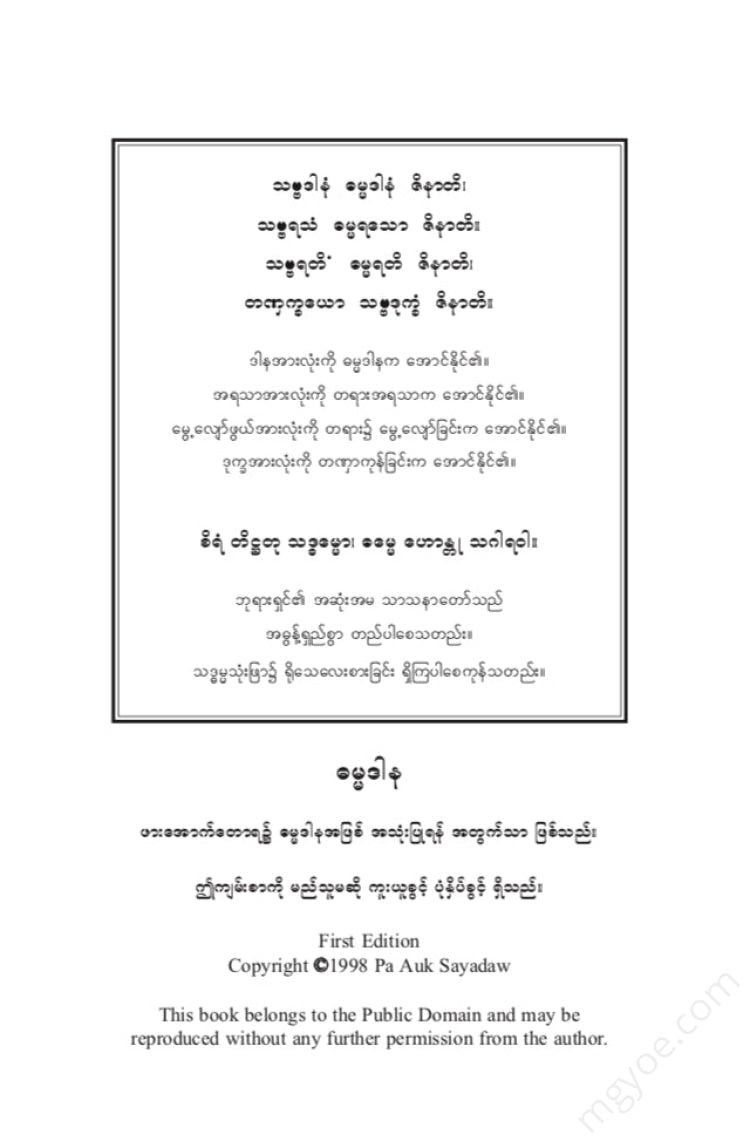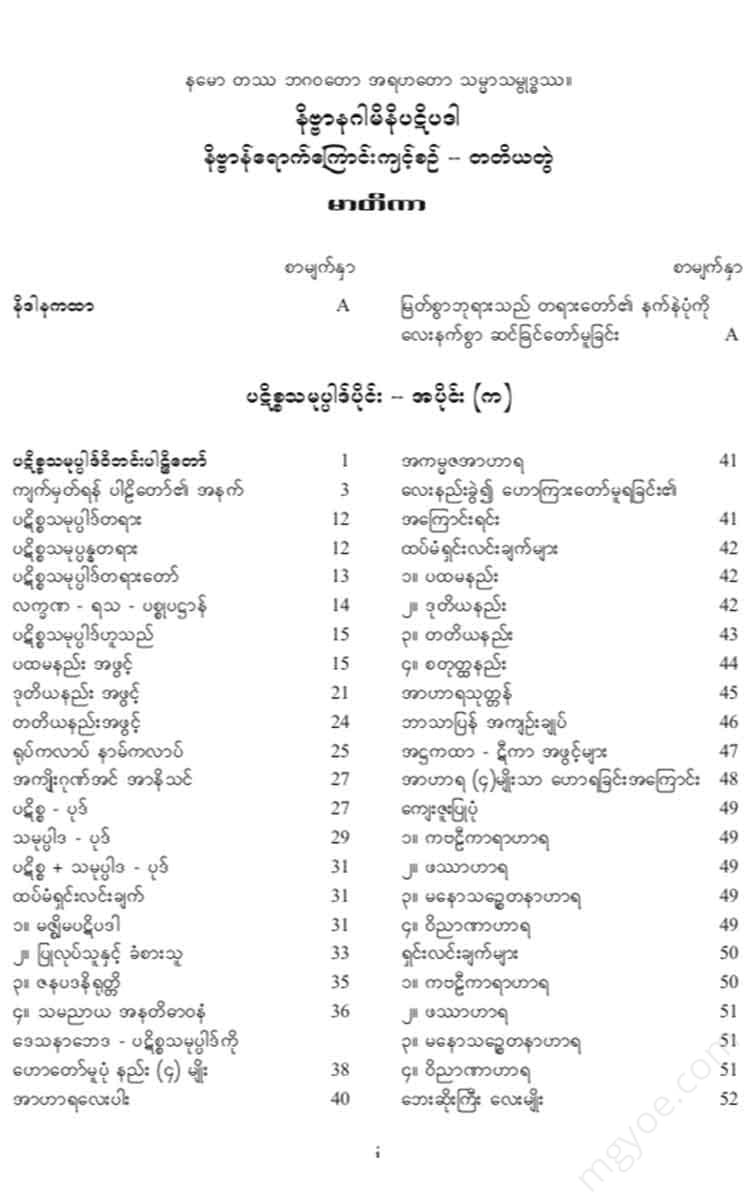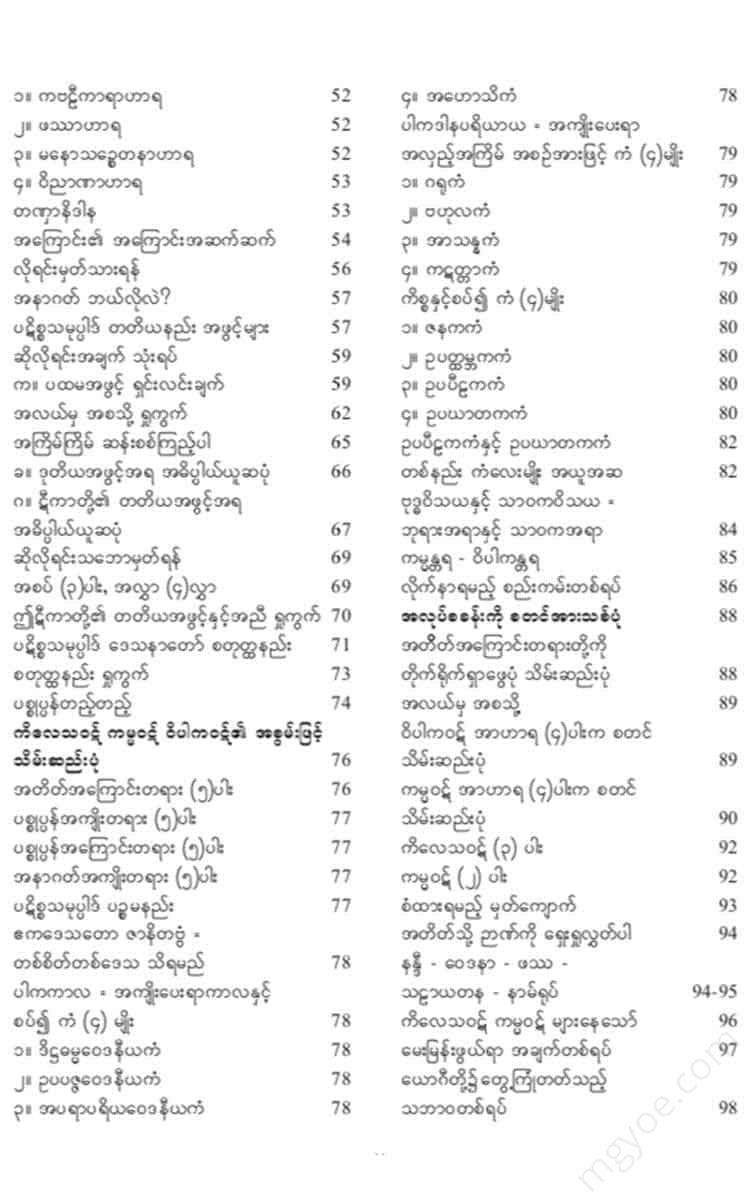Other Websites
The third volume of the practice of attaining Nibbana by the monk Pha Aok Tora Sayadaw
The third volume of the practice of attaining Nibbana by the monk Pha Aok Tora Sayadaw
Couldn't load pickup availability
On the morning of the 6th day of the new moon of the month of Vaso, which was the 50th day of the 49th day of the full moon of the month of Kasona, the Blessed One arose from his sitting under the tree of Linlun, and went again to the tree of the goat-tree called Ajapalanidha, and there he sat down, bending his knees, and sat down. Then, having approached a place where his ears and eyes were quiet, the Blessed One, who was dwelling alone, had this thought in his mind:
"The Dhamma is the highest, the most difficult "Kilamatha, sa mamastha vihesatha"ti. (Vi-3-5. Di-2-31.)
“These four noble truths, which I, the Buddha, have clearly and clearly understood, are like the water that covers the earth. They are as deep as a mustard seed covered by a mountain, and are difficult to see, but not easily seen. They are as hard to understand as a single tail, which has been cut a hundred times, and is pierced and supported by a single tail, and are difficult to understand, but not easily understood.
This worldly law that I have penetrated and realized is very peaceful and very noble.
These Four Noble Truths are not to be understood by the imagination of the philosophers and the intellectuals, but by the wisdom of the true view. They are very subtle. The path of the eight noble qualities, called the Nisavanugaminipathipadā, is a path that only the wise and wise can understand.
All these beings are delighted with the five sense-objects, the five sense-objects, and the five sense-objects,
When the king entered the garden, which was well-groomed and well-maintained by a skilled gardener, and was filled with flowers and fruits, and trees and flowers , and trees and flowers, and flowers and fruits, and trees and flowers, and flowers and fruits, and flowers and trees, and flowers and fruits, and flowers, and flowers, and flowers, and flowers, and flowers, and flowers, and flowers, and flowers, and flowers, and flowers, and flowers, and flowers, and flowers, and flowers, and flowers, and flowers, and flowers, and flowers, and flowers, and flowers, and flowers, and flowers, and flowers, and flowers, and flowers, and flowers, and flowers, and flowers, and flowers, and flowers, and flowers, and flowers, and flowers, and flowers, and flowers, and flowers, and flowers, and flowers, and flowers, and flowers, and flowers, and flowers, and flowers, and flowers, and flowers, and flowers, and flowers, and flowers, and flowers, and flowers, and flowers, and flowers, and flowers, and flowers, and flowers
In the same way, these beings, in the great garden of suffering, enjoy the five sensual pleasures that cling to them, and the two pleasures that cling to them, the pleasures of craving that cling to them. They enjoy themselves greatly, they enjoy themselves greatly, they enjoy themselves greatly. They enjoy themselves greatly.
They live happily and without getting bored in samsara. All beings who live happily and happily in these two alasas are unable to understand this law of cause and effect, which is repeated over and over again.
It is even more difficult to see the noble Dhamma of Nibbana, which is the cessation of all the aggregates of formations, the cessation of the four aggregates of suffering, namely , lust , attachment , attachment to defilements , and attachment to abhisaṃkarūpaṭi, which is the cessation of the (108) types of craving , the cessation of the fifteen hundred defilements = passions , and the cessation of all suffering.
"Even if I, the Buddha, were to preach such a profound Dhamma, if the beings who are not worthy of being liberated from the senses, devas, humans, and brahma beings, were unable to see or understand my Dhamma, then preaching the Dhamma to these beings who are not worthy of being liberated from the senses, devas, humans, and brahma beings, would be nothing but weariness and fatigue for me."
Such a thought arose in the mind of the Blessed One. Furthermore, in the mind of the Blessed One, these two verses, which were so wonderful and had never been heard before, arose clearly:
The key is the key, the key is the key.
The one who is free from passion and anger, the one who is free from the Dhamma, the one who is free from the Buddha.
The marriage is a marriage of love, a marriage of sorrow, and a marriage of sorrow.
The world is full of sorrow and sorrow.
( W-3-5-6. D-2-31.)
May I, the Buddha. By diligently practicing and acquiring all the noble virtues, such as the ten virtues, the thirty virtues , the three paths of self-control, and the five renunciations. The adhigata is attained and realized. Imaan dhamman = These four noble truths. Having become the Buddha of the present time. To preach them clearly to all beings, humans, devas, and brahmins. Halan = The time is not yet right. Ayan dhamman = These four noble truths. Ragaduto pratehi = Those who are overcome by passion and anger. Na susambho = They will not clearly and easily understand.
Tamo-kandhena = The darkness of ignorance. It covers the eyes of the universe so that they cannot see. All the devas and people who are obsessed with lust, lust for sex, lust for life, lust for vision. Nipunam = Subtle. Like the water that covers the earth, deep and deep. Duddasa = Like a mustard seed covered by a mountain, difficult to see. Anu - Subtle like an atom. The four noble truths that lead to Nibbana, which are the result of the cycle of existence. Nadekanti - They will not be able to see. (Vi-3-5-6. Di-2-31.)
The Buddha's Four Noble Truths are so difficult and profound. Among the Four Noble Truths, which are so difficult and profound, is the Dharma of the cessation of conflict.
In the Sissasamyot and Kutagara Suttas, etc., the Buddha taught that unless one realizes the Four Noble Truths with the wisdom of right view and sees them, one cannot end the suffering of samsara. Similarly, the Buddha taught that one cannot escape the suffering of samsara if one does not realize the Four Noble Truths with the wisdom of the path of enlightenment and the path of enlightenment.
No matter how difficult and profound the understanding is, if we do not understand and see the principles of the origin of existence, we cannot escape from samsara. Therefore, anyone who wants to be liberated from samsara must strive to understand the principles of the origin of existence.
In this endeavor, a good student must be able to accept the seven (7) practices of wisdom with reverence and a bowed head.
1. Strive to be virtuous and pure in character.
2. Cittavisuddhi - Try to attain a certain concentration of meditation called Upasara Samadhi or Appana to purify the mind from the impurities of Nivarana.
3. Ditthi-visuddhi = Try to purify your perception of form and name, to direct your perception to the Supreme, and to attain the knowledge of the perception of form and name.
4. Then, go up to the Kankhavithara Visuddhi camp.
If one is not yet perfect in the practice of the purity of virtue, purity of mind , purity of vision, and purity of virtue, and one is not yet pure in virtue, and one does not have any concentration of the twofold nature of upasara and appana , and one does not know form and name in order to reach the Supreme, and one is not able to see and understand form and name, and one is fully capable of purifying and purifying doubt and doubt, and one strives to attain the knowledge of the past, future, and present, which is called the knowledge of the three periods of existence, the past, the future, and the present, and one strives to understand the concepts of cause and effect, the relationship, the conflict, and the origin, but one is beyond the level, and one will only be broken, one will only be unable to form a bow. It is not easy to achieve success.
This is because only by standing on the ground of virtue and placing it on the noble stone of samadhi, and by breaking it with the sword of wisdom, which is sharpened to a point of being, can we see how this wheel of suffering and rebirth revolves.
(Abhi-Thatha-2-189. Visuddhi-2-221.)
Therefore, may all good people who desire the true Dhamma, with the wisdom of true vision, cultivate and strive to see the beginning of the teaching of the cessation of suffering that the Buddha has preached, before their own eyes.
The Buddha under the Frog
Chittala Mountain School - Fapaoktawara
Religious calendar -2537 - year,
Kawza Era - 1355 -, Tabaung month.
Namo Tassa Bhagavad Gita Arahant Gita Sammasambuddha.
The Origin of the Conflict - Part (A)
The Pali Canon of the Pathissamuppada Vibin - The Sattantabhajaniya Method
Ignorance is the cause of mental formations, the cause of mental formations is the cause of name and form, the cause of name and form is the cause of the body, the cause of the body is the cause of the body, the cause of the body is the cause of feeling, the cause of feeling is craving, the cause of craving is the cause of attachment, the cause of attachment is the cause of existence, the cause of birth
This is ignorance of the world, ignorance of the ocean of suffering, ignorance of the cessation of suffering, ignorance of the path leading to the cessation of suffering, ignorance of the world.
The following are the mental formations of ignorance: the mental formations of the mind, the mental formations of the body, the mental formations of the mind
The dharma of the
The dharma of the
The mind is the source of the mind, the mind is the source of the mind, the mind is the source of the mind, the mind is the source of the mind.
The body is the body, the body is the body, the speech is the speech, the mind is the mind
The knowledge of the mind, the knowledge of the senses, the knowledge of the senses, the knowledge of the body, the knowledge of the mind, the knowledge of the senses
This is the name of the spiritual body, this is the name of the spiritual body, this is the name of the spiritual body. This is the name of the spiritual body, this is the body of the sense organs, this is the body of the mental body
The name, form, and existence are the same as the body, the same as the mind,
This is the way of life, the way of the mind, the way of the body, the way of the body, the way of the mind
The following are the feelings of attachment, the feelings of attachment to the body, the feelings of attachment to the mind, the feelings of attachment to the senses, the feelings of attachment to the senses, the feelings of attachment to the senses, the feelings of attachment to the senses, the feelings of attachment to the senses, the feelings of attachment to the senses, the feelings of attachment to the senses.
This is the craving for pain and suffering, the craving for form, the craving for pleasure, the craving for smell, the craving for taste, the craving for the Dhamma, the craving for the physical and mental.
The following are the causes of craving, the causes of lust, the causes of desire, the causes of morality, the causes of self-restraint, the causes of attachment, the causes of attachment.
This is the way of the world, the way of the world, the way of the world, the way of the world, the way of the world. This is the way of the world,
The following are the upapattibhava, the upapattibhava of sensuality, the upapattibhava of form, the upapattibhava of non-form, the upapattibhava of perception, the upapattibhava of the non-perception, the upapattibhava of the sun, the upapattibhava of the one-pointedness, the upapattibhava of the four-pointedness, the upapattibhava of the five-pointedness. The upapattibhava of the four-pointedness is the upapattibhava.
The origin of the world is the world of the world,
This is the birth of the world, this is the death of the world, this is the death of the world. This is the birth of the world, this is the death
This is the death of the body,
Thus, the mind is the source of all suffering
This is the way of the world,
This is the suffering of the body, the suffering of the body, the suffering of the body, the suffering of the body, the suffering of the body, the suffering of the body, the suffering of the body, the suffering of the body, the suffering of the body, the suffering of the body, the suffering of the body.
This is the source of suffering, the source of suffering is the source of suffering, the source of suffering is the source of suffering, the source of suffering is the source of suffering, the source of suffering is the source of suffering.
This is the way of the mind,
